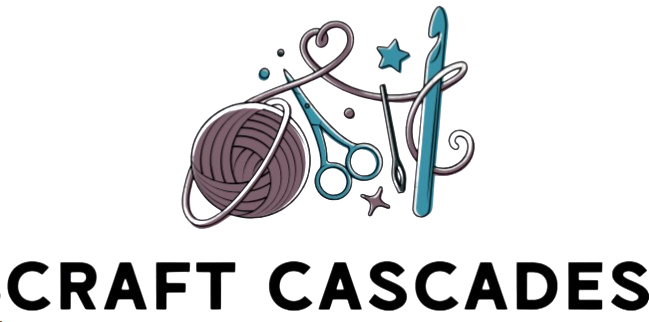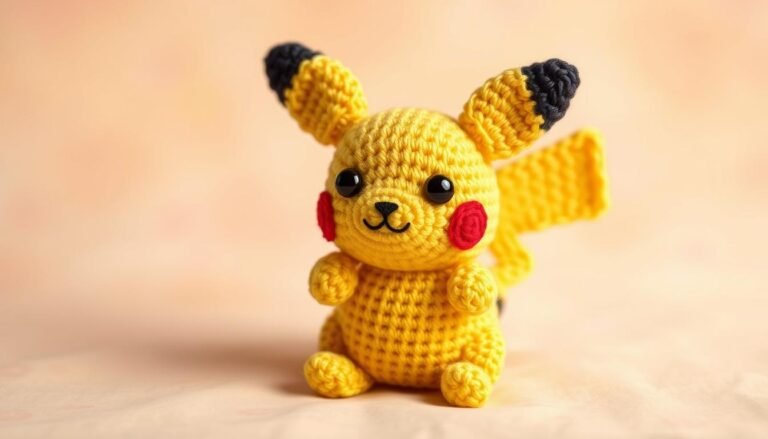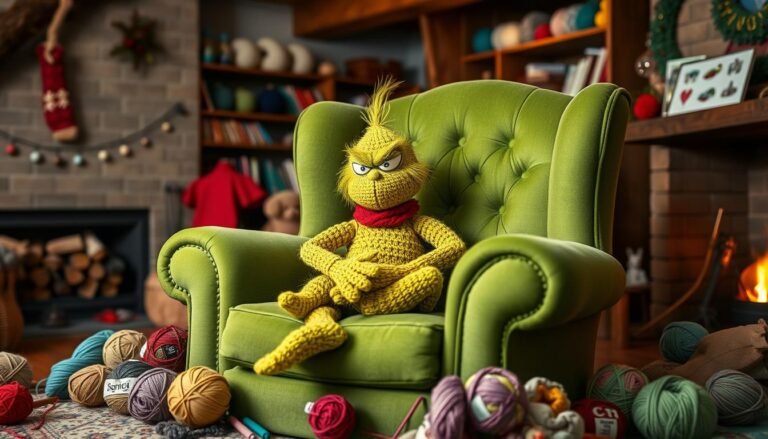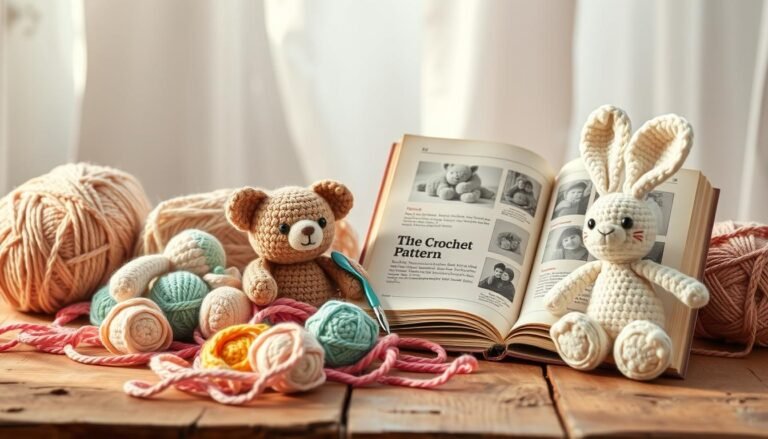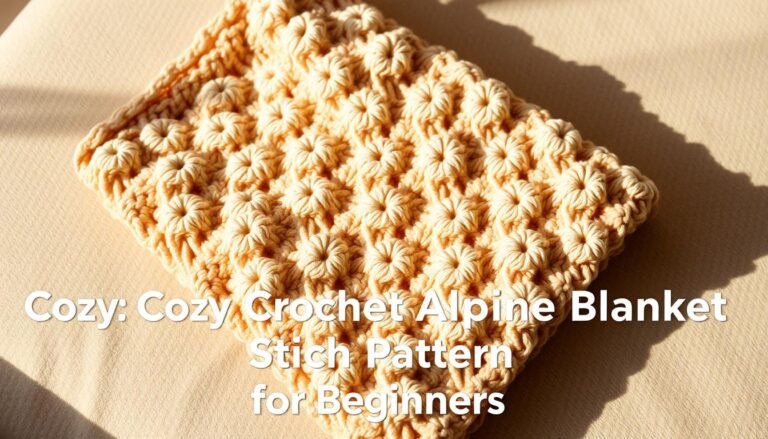Explore the world of filet crochet patterns and find endless creative possibilities. This technique mixes open and filled spaces to make beautiful lacy designs. These designs are both elegant and versatile.
Filet crochet lets you create everything from intricate doilies to modern home decor. It uses a simple grid system and basic stitches. This makes it easy to bring charming motifs and text to life in your projects.
Whether you’re experienced or just starting, filet crochet projects are full of opportunities. You can make lightweight shawls that drape beautifully or eye-catching table runners with vintage charm. The choices are endless.
Ready to discover the magic of filet crochet? Let’s start this creative journey together. We’ll see how these patterns can turn your next project into a masterpiece.
Understanding Filet Crochet: A Beginner’s Guide
Filet crochet is a fascinating technique that makes intricate designs with simple stitches. It creates stunning patterns on a mesh fabric. Let’s explore this unique style together.
What Makes Filet Crochet Unique
Filet crochet is special because of its grid design. It uses open and closed squares to make pictures and patterns. You only need two stitches to create complex designs.
Basic Mesh Structure and Grid System
The grid system is the base of filet crochet. Each square can be open or closed. Open squares let light through, and closed squares are solid. This setup offers endless design options.
| Mesh Type | Composition | Visual Effect |
|---|---|---|
| Open Mesh | 1 DC, 2 chains, 1 DC | Transparent |
| Closed Mesh | 4 DC stitches | Solid |
Essential Stitches for Filet Crochet
Filet crochet uses two main stitches: chain and double crochet. Chain stitches make the open squares, and double crochet stitches make the solid ones. Learning these stitches is crucial for success.
Now you’re ready to start your filet crochet journey. Remember, practice is key. Don’t be afraid to try new patterns and designs.
Required Materials and Tools for Filet Projects
Starting a filet crochet project needs special supplies and tools. Let’s look at what you’ll need to make beautiful lace designs.
Choosing the right yarn is key. Filet crochet often uses thin, white cotton thread. But, today, people also use thicker yarns and bright colors. For beginners, Curio #3 or #10, CotLin, or Comfy Fingering are great choices.
Finding the right hook is important. The size of your hook changes the pattern’s look. Filet crochet uses simple stitches like chains and double crochet to make its mesh.

Here’s a quick guide to start your project:
| Chart Square | Starting Chain | Stitches |
|---|---|---|
| Open | Chain 5 | 1 DC, 2 chains |
| Closed | Chain 3 | 3 DC |
With these supplies and tools, you’re set to make stunning lace patterns. Remember, practice is key. Don’t worry if your first tries aren’t perfect.
Essential Filet Crochet Patterns for Beginners
Ready to dive into filet crochet? Let’s explore some beginner filet crochet patterns perfect for those just starting out. These easy crochet projects will help you build skills and confidence in filet crochet techniques.

Simple Bookmark Designs
Bookmarks are ideal starter projects for filet crochet. They’re small, quick to complete, and great for practicing basic techniques. Try creating a bookmark with your initials or a favorite quote. The full alphabet chart in both capital and lowercase letters makes personalizing your bookmark a breeze.
Basic Washcloth Patterns
Washcloths are perfect for honing your filet crochet skills while making something useful. The Honeycomb Washcloth pattern is a great choice for beginners. It uses simple repeating patterns and teaches you how to create both open and filled spaces in filet crochet.
Easy Table Runner Projects
For a slightly bigger challenge, try a table runner. The Crochet Placemat Sanna pattern is an excellent starting point. It introduces you to larger-scale designs and helps you practice maintaining consistent tension across a bigger project. Remember, each row typically starts and ends with a closed mesh or solid block square.
As you work on these beginner filet crochet patterns, keep in mind that filet crochet uses only double crochet and chain stitches. This simplicity makes it accessible for newcomers to crochet. Start with one of these easy crochet projects and watch your skills grow!
Reading and Understanding Filet Crochet Charts
Filet crochet charts are key for making beautiful lace designs. Learning to read them is crucial for success. Let’s cover the basics to help you get better at this skill.
Interpreting Filled and Empty Blocks
Filet crochet charts have a grid of filled and empty blocks. A filled block means four double crochet stitches. An empty block is two chain stitches with a double crochet on each side. This code is the base of filet crochet patterns.
Following Row Instructions
Start from the bottom when using filet crochet charts. Odd-numbered rows are crocheted from right to left. Even-numbered rows are from left to right. This pattern makes the mesh structure of filet crochet.

Counting Stitches Correctly
Counting stitches right is key in filet crochet. Use this formula: total stitches = (3 × number of boxes) + 1. For example, a row with 5 boxes needs 16 stitches. Remember, two filled blocks share stitches, so they use 7 double crochets, not 8.
| Number of Boxes | Total Stitches |
|---|---|
| 5 | 16 |
| 7 | 22 |
| 9 | 28 |
With practice, reading filet crochet charts will become easy. Start with simple patterns and move to more complex ones. Soon, you’ll make intricate filet crochet pieces with ease.
Creating Beautiful Home Decor with Filet Crochet

Filet crochet is a lovely way to add a personal touch to your home. You can make everything from delicate curtains to fancy table runners. It’s great for both old-fashioned and modern looks.
With filet crochet, you can turn simple thread into beautiful decorations. These pieces show off your unique style.
When making filet crochet home decor, think about these projects:
- Curtains: Add elegance to your windows with lacy filet crochet panels
- Table runners: Create centerpieces that showcase your crochet skills
- Doilies: Craft delicate accents for side tables or dressers
- Wall hangings: Design unique art pieces to personalize your walls
Choose the right yarn or thread for your project. For strong items like tote bags, use 100% cotton yarn. Cotton blends work well for lighter projects like cardigans or shawls.
Every solid block in filet crochet uses three double crochets. Open blocks have a double crochet, chain, and another double crochet.
Try filet crochet to make special home decor items. You can make a “Home Sweet Home” sign or fancy lace curtains. Filet crochet lets you add handmade charm to your home.
Seasonal and Holiday Filet Crochet Projects
Filet crochet is perfect for making beautiful seasonal and holiday patterns. You can create festive decorations and cozy home accents. These projects add charm to your space.
Christmas Decorations
Make your home look like a winter wonderland with filet crochet Christmas ornaments. Try making a Christmas Tree Skirt that’s 58″ in diameter. It’s great for showing off your tree.
For a smaller project, make a Large Snowman Doily that’s 25.5″ square. It adds a fun touch to your holiday decor.
Spring and Summer Designs
Bring in the warmth with delicate filet crochet patterns for spring and summer. The Easter Bunny Doily, at 17″ square, is perfect for spring. It adds a spring touch to your table.
For summer, the Napa Valley Table Runner at 22″ x 33″ is elegant. It’s great for outdoor gatherings.

Fall and Winter Patterns
Cozy up with seasonal filet crochet projects for fall and winter. The Snowman Table Runner, at 27″ x 40″, is a charming centerpiece for winter meals. It adds a festive touch.
For autumn, the Praying Hands Wall Hanging at 17″ x 20″ is a thoughtful addition. It adds a personal touch to your fall decor.
Filet crochet patterns are affordable, priced from $1.25 to $3.75 each. Sets cost $3.95 to $6.95. It’s a budget-friendly way to create beautiful seasonal decor. These versatile patterns let you show your creativity all year round.
Fashion-Forward Filet Crochet Patterns

Filet crochet clothing is all the rage in crochet fashion. It combines vintage charm with modern style. You can make everything from lacy tops to elegant shawls.
Yarn weight is key in crochet fashion. For a light summer top, use #4 weight yarn. You’ll need 1750 yards. Make sure your gauge is right for a perfect fit.
Beginners should start with a shawl. Use 3 ply sport weight yarn. Aim for a 10 double crochet x 10 double crochet = 4″ x 4″ gauge. This will help you get the hang of it.
Don’t forget about crochet for colder weather. Make cozy afghans with aran weight yarn. A 44 inches wide by 64 inches tall blanket needs about 1320 meters of yarn. Try mixing colors for a unique look.
Ready to try filet crochet clothing? Pick yarn that looks good with your skin and body. With practice, you’ll make stylish pieces that show off your personal style.
Advanced Techniques in Filet Crochet
Ready to level up your filet crochet skills? Advanced techniques open a world of complex patterns. Let’s dive into some methods to boost your projects.
Increasing and Decreasing Methods
Shaping your crochet work adds depth and interest. Decreasing is simple, often using slip stitches. Increasing, however, needs more care.
For most patterns, each row has a specific number of stitches. Remember, the last double crochet of one block counts as the first of the next. This reduces your stitch count.
Working with Multiple Colors
Adding color to your crochet brings it to life. Try using threads like Aunt Lydia’s Metallic for a festive look. When changing colors, make sure to weave in ends well.
Practice working with multiple yarns to create beautiful multi-colored designs.
Creating Complex Designs
Complex patterns in filet crochet use open and closed mesh to create detailed images. For big projects like the 16.5″ Rose Doily, break it into smaller parts. Start with smaller projects like a 5.5″ Cloverleaf Coaster to improve your skills.
Mastering these techniques lets you make everything from delicate doilies to stunning wall hangings. Remember, practice is key. Don’t hesitate to try different patterns and yarns to find your style.
Tips for Perfect Filet Crochet Results

Mastering filet crochet techniques can make your projects shine. Start by keeping your tension even. This makes your stitches look the same, giving your work a neat finish. Use stitch markers to keep your edges straight and count your stitches often.
Choosing the right hook and thread is key. Filet crochet often uses thread, not yarn. A standard filet block has three double crochet stitches. Spaces have one double crochet and two chain stitches. This pattern is common in most designs.
Blocking is a must for filet crochet. It makes your stitches even, sharpens edges, and brings out shapes. After you finish, pin it to shape and mist with water. Let it dry completely before taking out the pins. This step makes your design pop.
Keep practicing these crochet techniques. With time, your filet crochet projects will get better. You’ll create beautiful, precise designs that really catch the eye.
Thread Selection and Hook Size Guide
Choosing the right crochet thread and hook sizes is key for your filet crochet projects. Let’s look at how to pick these important parts for the best results.
Understanding Thread Weights
Crochet thread comes in different weights. Smaller numbers mean thicker threads. For example, size 3 is thicker than size 10. Sizes 20 and 30 are common in many patterns.
Beginners should start with sizes 3, 5, or 10. Then, they can try finer threads.
Matching Hooks to Thread Sizes
Steel crochet hooks range from size 00 to 14. The numbering is opposite to thread – smaller numbers mean larger hooks. Here’s a guide to help you match hooks and threads:
| Thread Size | Recommended Hook Size |
|---|---|
| 10 | 7 or 8 |
| 20 | 9 or 10 |
| 30 | 10, 11, or 12 |
| 40 | 11, 12, or 13 |
| 60 | 12 or 13 |
| 80 | 13 or 14 |
| 100 | 14 |
Tension Control Tips
Keeping your tension consistent is crucial in filet crochet. Thread crochet needs tighter tension than yarn projects. Practice with different thread weights to find your perfect tension.
Remember, your tension shouldn’t hurt your hands. Working with thread can improve your fine motor skills. This will make you better at crochet.

By understanding thread selection and hook sizes, you’ll be ready for many filet crochet projects. You can make delicate doilies or intricate bedspreads.
Blocking and Finishing Your Filet Crochet Work

Crochet blocking is key in finishing filet crochet. It makes the open spaces bigger and lets more light through. To block, soak your work, then squeeze out water and dry it flat.
For wet blocking, pin your piece to a flat surface and stretch it to the right size. This is best for cotton and linen threads. Steam blocking is good for wool. Hold a steamer over your work without touching it.
Spray blocking is perfect for delicate pieces. Mist your project with water and shape it carefully. Filet crochet finishing isn’t just about blocking. You also need to weave in loose ends and add borders or edgings.
- Use the right hook size to maintain proper stitch definition
- Block your work to enhance open spaces and overall shape
- Weave in ends and add optional borders for a polished look
Remember, each block on a filet crochet graph is 3 stitches. This helps in planning your project and getting the right size. With these techniques, your crochet projects will look amazing!
Common Mistakes to Avoid in Filet Crochet
Filet crochet is a beautiful technique, but it comes with its share of challenges. Let’s explore some common filet crochet errors and crochet troubleshooting tips to help you create stunning projects.
Miscounting stitches is a frequent issue in filet crochet. Remember, each filled block consists of 4 double crochet stitches, while adjacent filled blocks share the last stitch. To avoid confusion, count your stitches regularly and use stitch markers to keep track of your progress.
Inconsistent tension can throw off your entire pattern. Practice maintaining even tension across both open and closed meshes. This will ensure your finished piece has a professional look with well-defined shapes.
Misreading charts is another common pitfall. Remember, odd-numbered rows are worked from right to left, while even-numbered rows go from left to right. Pay close attention to the direction and take your time interpreting the symbols for filled and empty blocks.
Accidentally increasing or decreasing stitches can disrupt your pattern. Double-check your stitch count at the end of each row. For a pattern with 7 columns, you should have 22 stitches across (7 x 3 + 1).
| Common Error | Troubleshooting Tip |
|---|---|
| Miscounting stitches | Use stitch markers and count regularly |
| Inconsistent tension | Practice maintaining even tension across meshes |
| Misreading charts | Pay attention to row direction and symbols |
| Accidental increases/decreases | Double-check stitch count at end of each row |
Remember, mistakes are part of the learning process. With practice and patience, you’ll master filet crochet and create beautiful, intricate designs.
Adapting Traditional Filet Crochet Patterns for Modern Projects
Filet crochet has evolved a lot since the 19th century. You can give old patterns a new look with modern techniques. This way, you make beautiful pieces that mix old charm with new style.
Start by changing the size of your project. A small doily can become a big wall hanging with chunky yarn and a big hook. Try using bright colors or metallic yarns like Aunt Lydia’s Metallic Thread Crochet in silver or gold for a fresh look.
Adapting crochet patterns is crucial for making them modern. You can turn a table runner into a cool crop top or a curtain pattern into a unique phone case. Remember, each filled block in your pattern has 4 double crochet stitches. So, adjust your stitch count when you change the size of your project.
Feel free to mix filet crochet with other stitches. Blend open and closed meshes with textured stitches or colorwork for something special. With these tips, you’ll make modern filet crochet projects that show off your creativity and respect this classic craft.
